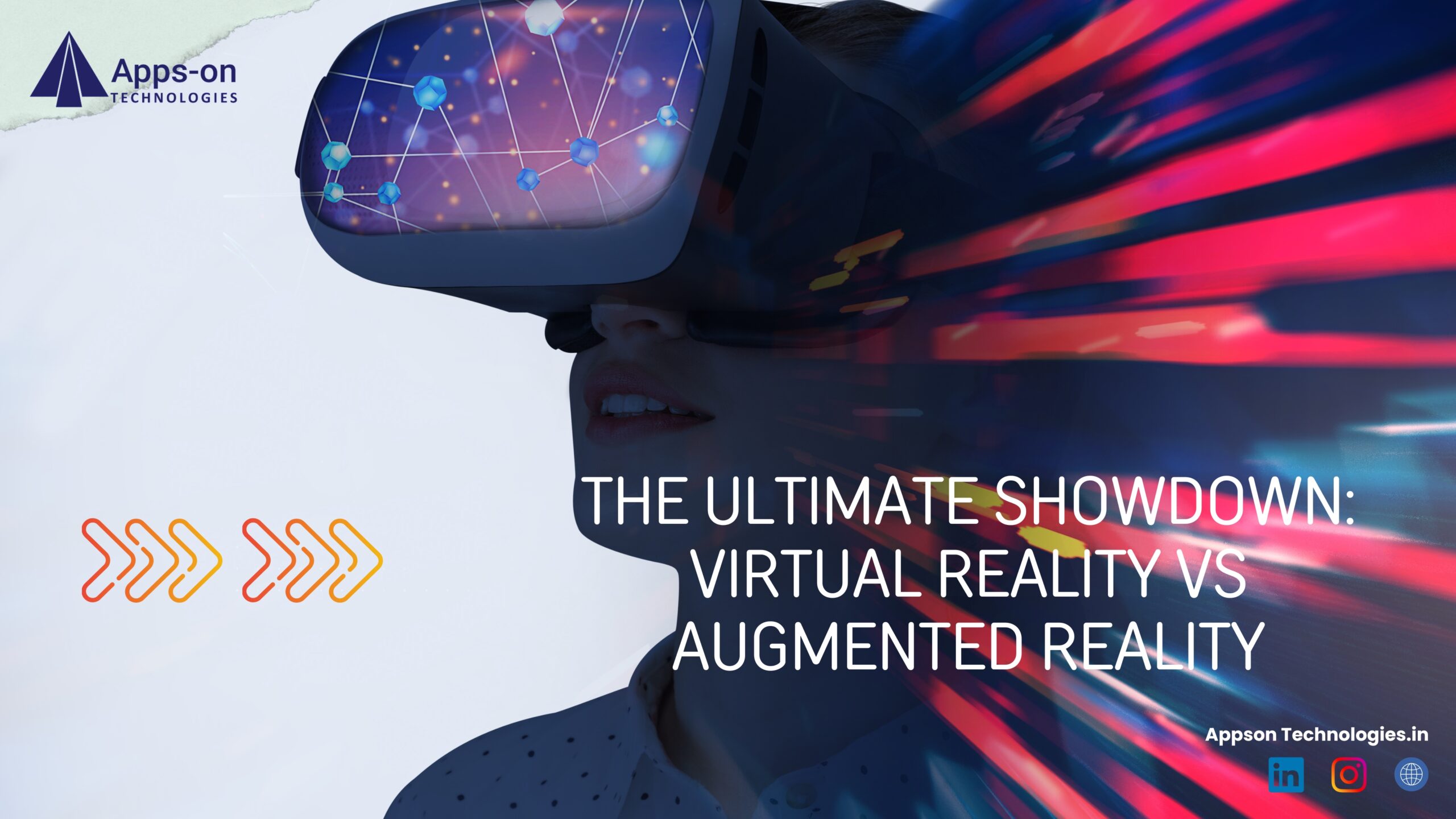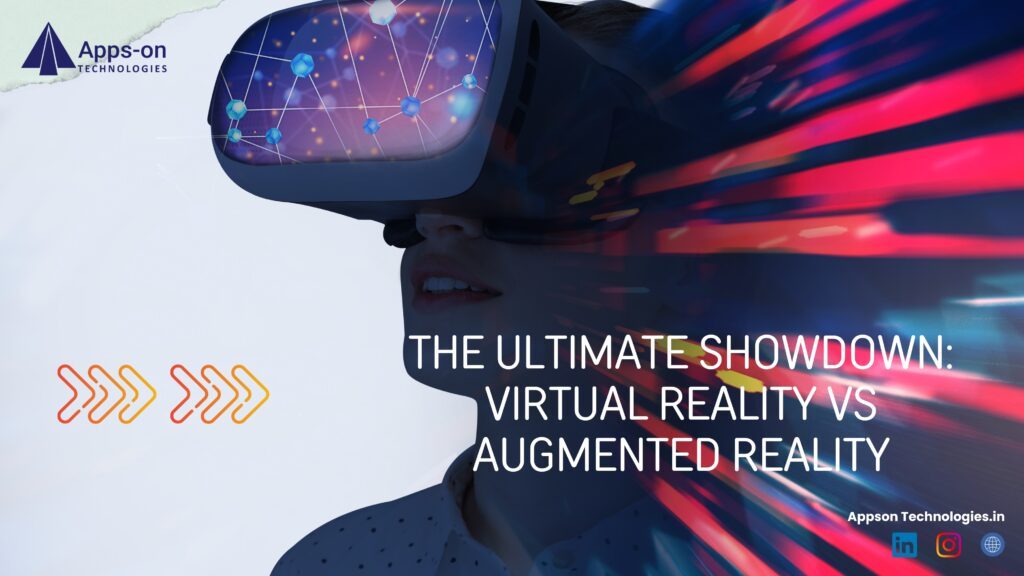Virtual Reality vs Augmented Reality

by admin
Virtual Reality vs Augmented Reality:The Ultimate Showdown!

Virtual reality (VR) and augmented reality (AR) are two of the most talked-about technologies in recent years. Both offer immersive experiences that transport users to digital worlds, but they do so in different ways.
In this article, we’ll explore the differences between VR and AR, their applications, and the potential impact they can have on various industries.
What is Virtual Reality?
Virtual reality is a technology that uses computer-generated simulations to create a completely immersive experience for the user. It typically involves wearing a headset that covers the user’s eyes and ears, blocking out the real world and replacing it with a digital one.
How Does Virtual Reality Work?

Virtual reality works by using a combination of hardware and software to create a simulated environment. The hardware includes a VR headset, which is equipped with a screen for each eye, and motion sensors to track the user’s movements.
The software is responsible for creating the virtual world and responding to the user’s actions in real-time. This allows the user to interact with the virtual environment and feel fully immersed in it.
Applications of Virtual Reality
Virtual reality has a wide range of applications, from gaming and entertainment to education and training. Some of the most common uses of VR include:
- Gaming: VR gaming allows players to fully immerse themselves in the game world, making for a more realistic and engaging experience.
- Education: VR can be used to create interactive and immersive learning experiences, making it easier for students to understand complex concepts.
- Training: VR is also used for training purposes, particularly in industries such as aviation, healthcare, and military, where hands-on experience is crucial.
- Healthcare: VR is being used in healthcare to treat phobias, PTSD, and other mental health conditions.
- Real Estate: VR is being used in the real estate industry to create virtual property tours, allowing potential buyers to experience a property without physically being there.
What is Augmented Reality?
Augmented reality is a technology that overlays digital information onto the real world. Unlike VR, which creates a completely digital environment, AR enhances the real world by adding digital elements to it.
How Does Augmented Reality Work?

Augmented reality works by using a device, such as a smartphone or AR glasses, to project digital information onto the real world. The device uses sensors and cameras to detect the user’s surroundings and then overlays digital elements onto it.
Applications of Augmented Reality
Augmented reality has a wide range of applications, including:
- Gaming: AR gaming allows players to interact with the real world while also incorporating digital elements.
- Retail: AR is being used in retail to enhance the shopping experience, allowing customers to try on clothes virtually or see how furniture would look in their home.
- Navigation: AR is being used in navigation apps to provide real-time information about the user’s surroundings, such as directions and points of interest.
- Education: AR is being used in education to create interactive and engaging learning experiences.
- Healthcare: AR is being used in healthcare to assist with surgeries and medical procedures.
Virtual Reality vs. Augmented Reality: The Differences
While both VR and AR offer immersive experiences, there are some key differences between the two technologies.
Immersion
The main difference between VR and AR is the level of immersion. VR creates a completely digital environment, while AR enhances the real world with digital elements. This means that VR is more immersive, as it completely blocks out the real world, while AR allows users to see and interact with their surroundings.
Hardware
Another difference between VR and AR is the hardware required to experience them. VR typically requires a headset, while AR can be experienced through a smartphone or AR glasses. This makes AR more accessible, as most people already own a smartphone.
Applications
While both VR and AR have a wide range of applications, they are often used for different purposes. VR is commonly used for gaming and entertainment, while AR is used for more practical applications, such as navigation and retail.
The Impact of VR and AR on Industries
Both VR and AR have the potential to revolutionize various industries. Here are some examples of how these technologies are being used in different fields.
Gaming

VR has already made a significant impact on the gaming industry, providing players with a more immersive and realistic gaming experience. With the development of more advanced VR technology, we can expect to see even more innovative and engaging games in the future.
AR is also making its mark in the gaming industry, with the popular game Pokemon Go being a prime example. AR gaming allows players to interact with the real world while also incorporating digital elements, making for a unique and exciting gaming experience.
Education
VR and AR have the potential to transform the education sector, making learning more interactive and engaging. VR can be used to create virtual field trips, allowing students to explore different parts of the world without leaving the classroom. AR can also be used to enhance learning by providing students with real-time information and interactive experiences.
Healthcare
VR and AR are also making a significant impact on the healthcare industry. VR is being used to treat mental health conditions, such as phobias and PTSD, by creating virtual environments that allow patients to confront their fears in a safe and controlled setting. AR is also being used in healthcare to assist with surgeries and medical procedures, providing doctors with real-time information and guidance.
Retail

AR is transforming the retail industry by providing customers with a more interactive and personalized shopping experience. With AR, customers can try on clothes virtually, see how furniture would look in their home, and even get real-time information about products while shopping in-store.
The Future of VR and AR
The potential of VR and AR is limitless, and we can expect to see even more innovative uses of these technologies in the future. As the technology continues to advance, we can expect to see more realistic and immersive experiences, making VR and AR an integral part of our daily lives.
Conclusion
In conclusion, while VR and AR are often grouped together, they are two distinct technologies that offer different experiences. VR creates a completely digital environment, while AR enhances the real world with digital elements. Both have a wide range of applications and the potential to revolutionize various industries. As technology continues to advance, we can expect to see even more innovative uses of VR and AR, making them an integral part of our daily lives.
Recommended Posts

Beyond the Buzzword: Unveiling the Symphony of Contract Developers in Your Tech Orchestra
April 26, 2024

The Power of Staff Augmentation: Bridging the Talent Gap and Building Your Dream Team
April 25, 2024
Unleash the Power of Flutter Experts
April 24, 2024


